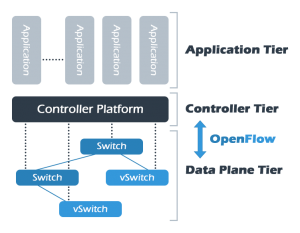Enterprise Mobile App Development : Dallas Fort Worth Metroplex
SDN App Development
In support of a major shift in networking and data center operations, Ayoka performs SDN app development to create enterprise ready networking applications. Software-defined Networking or SDN is a paradigm that allows administrators to programmatically define how a network behaves. This is accomplished by decoupling the control plane (routing/forwarding) and the data plane (switches/routers/hardware). Simply put, SDN transforms networks by disengaging the physical network devices from the programmable software solutions. This separation is designed to enable network flow that is indiscriminate of vendor-specific devices and proprietary protocols.
SDN gives a network administrator a powerful set of APIs that can be used to quickly and dynamically adapt the network to accommodate new applications or a change of physical/virtual hardware. These administrators have the ability to improve customer experience and deliver new opportunities to other application developers.

SDN gives businesses the ability to purchase hardware independently from the software that it will support. The software can then be built to the specific needs of the organization, keeping your network dynamic and flexible enough to meet a rapidly evolving set of consumer and internal business needs. With the ability to handle everything through your centralized SDN Controller, rolling out a new functionality, service, or application becomes as easy as changing a few lines of logic. Application-aware routing applications will enable the ability for the software to make decisions based on application-level insights, like bandwidth and routing, to provision and manage data flow throughout the network.
The SDN paradigm also offers the ability to scale your hardware based on your business’ growing demand. Before this software-centric model, legacy infrastructures demanded that hardware had to be sized to accommodate peak capacity, creating wasted hardware resources. Networks do not run usually at peak capacity at all times. Utilizing an SDN-based approach can now utilize resources on an as-needed basis or create custom logic to accommodate for high levels of traffic while waiting for upgrades to infrastructure.
Asset management becomes simplified through SDN as well. Keeping track of all the hardware in an SDN environment is streamlined since everything is handled through one central Control Layer. Leading to a level of visibility within the network that helps administrators keep track of what is being used, by whom and how.
Software-defined Networking ultimately allows for a greater flexibility in the way you handle communication between both your application layer and your physical/virtual hardware layer than many implemented solutions. Its implementation makes for easy maintenance, updating, and testing of your network architecture, but provides a more manageable experience while giving you the ability to avoid vendor lock-in proprietary protocols and management suites. SDN allows you to take control back over how and what your network is able to do for your native and web applications.

